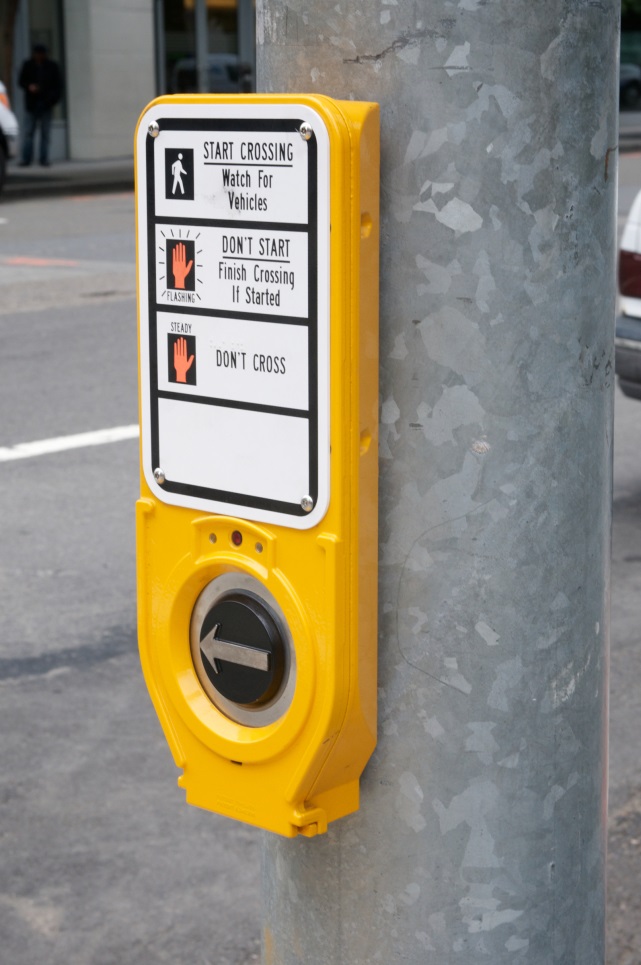Today, we are celebrating a milestone in advocacy: the 23rd International Day of Persons with Disabilities, a day dedicated to promoting awareness and support for critical issues relating to the inclusion of persons with disabilities in society. This year’s theme, Inclusion Matters, is something our agency prioritizes in construction and improvement projects.

Accessible Pedestrian Signals (pictured above) provide necessary features such as a locator tone, a button with a raised arrow to indicate direction of travel that vibrates when crossing is safe, and a customizable message people can hear. These will be installed at each intersection as part of the Van Ness Corridor Transit Improvement Project.
As part of the Van Ness Corridor Transit Improvement Project, which includes the Van Ness Bus Rapid Transit corridor, project staff have been researching and developing features for persons with disabilities to navigate San Francisco’s first bus rapid transit service when it begins in 2019.
The agency already uses several standards that include installing curb ramps in the direction of the path of travel, placing truncated domes (the knobby yellow mats mounted mounted on curb ramps to indicate traffic dangers to people with vision impairments) at intersections, and installing Accessible Pedestrian Signals, or APS that include sounds and vibrations to help provide safer crossings at intersections.
Accessible Wayfinding
The term “wayfinding” refers to any signs, maps, or other methods to convey location and direction. In addition to the elements listed above, the project team took the opportunity to go further with accessibility features that improve wayfinding for blind or low-vision users. The project team collaborated with nearly a dozen agencies and organizations that provide support for the city's low-vision and blind communities to solicit recommendations for wayfinding treatments to implement as part of the project.
The goal of this effort is to present and analyze a range of options to determine which would be most successful along Van Ness Avenue. One of the more innovative wayfinding features recommended for the Van Ness Bus Rapid Transit is the development of tactile maps to be installed on the accessible pedestrian signal units at intersections where a stop is located.
Tactile maps provide people with visual impairments with a map they can feel to orient themselves and determine the layout of the area around them. For Van Ness Avenue, this will include information such as the number of traffic lanes needed to cross to get to the boarding islands and the direction of travel for buses stopping at those boarding islands.
Another new wayfinding feature will be the customized messages that play when the audible signal is pressed. Typically, these signals announce the name of the intersection a person is crossing; the signals serving the Van Ness BRT will also provide people with wayfinding information about the transit stop.
Project staff will be working on developing the new wayfinding features, instructional materials and a training program that will be implemented when construction is completed in 2018.
For more information on the Van Ness Corridor Transit Improvement Project, please contact the project team at vannessbrt@sfmta.com or 415.749.2446.